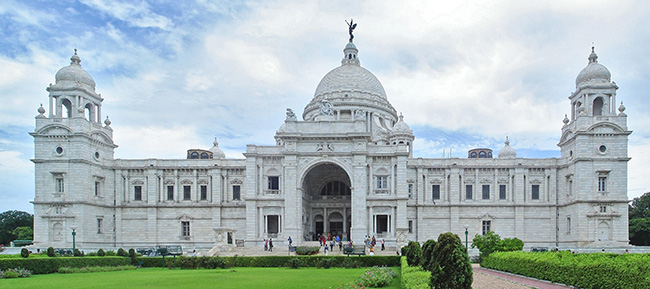
Kolkata, popularly known as the ‘City of Joy’, is a city of rich cultural heritage and age old traditions. Located on the east bank of the Hooghly River, the city is known for its numerous places of interest. Kolkata happened to be one of the first British colonies in India and the British influence can be seen in its architecture and monuments which date back to the British era.
The soul of the city lies in its architectural treasure and to experience it in the right spirit as the ‘City of Joy’. The below mentioned places are just a handful of the tourist places you will discover in Kolkata, but should not be missed on your visit to this bustling metropolis.
1. Victoria Memorial The Victoria Memorial is a large marble building in Kolkata dedicated to the memory of Queen Victoria built between 1906 and 1921. The magnificent architecture was designed by William Emerson, President of the Royal Institute of British Architects and has a mixture of British and Mughal elements as well as Venetian, Egyptian, Deccani and Islamic architectural influences. There are various paintings of the Royal British families, royal and historic artefacts, lithographs and documents of the historical interests inside the building.
The Victoria Memorial is a large marble building in Kolkata dedicated to the memory of Queen Victoria built between 1906 and 1921. The magnificent architecture was designed by William Emerson, President of the Royal Institute of British Architects and has a mixture of British and Mughal elements as well as Venetian, Egyptian, Deccani and Islamic architectural influences. There are various paintings of the Royal British families, royal and historic artefacts, lithographs and documents of the historical interests inside the building.
2. Indian Museum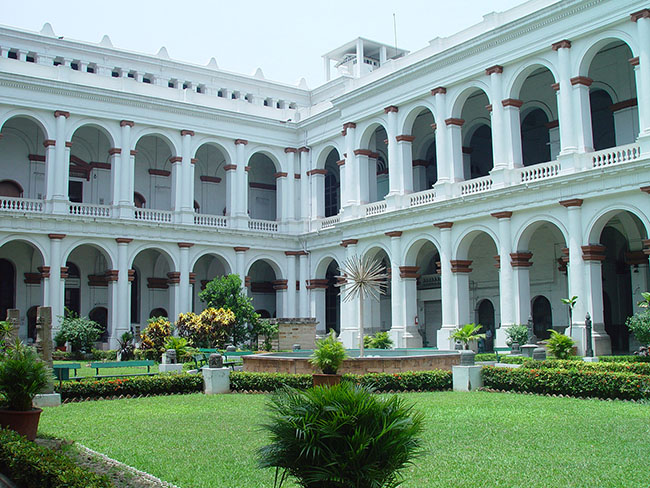 The Indian Museum is the largest and oldest museum in India and has rare collections of antiques, armour and ornaments, fossils, skeletons, mummies, and Mughal paintings. It was founded by the Asiatic Society of Bengal in Kolkata in 1814. The building was designed in Italian architectural by Walter B Grawille.
The Indian Museum is the largest and oldest museum in India and has rare collections of antiques, armour and ornaments, fossils, skeletons, mummies, and Mughal paintings. It was founded by the Asiatic Society of Bengal in Kolkata in 1814. The building was designed in Italian architectural by Walter B Grawille.
3. Writer’s Building The Writers' Building is the secretariat building of the State Government of West Bengal in India. Designed by Thomas Lyon in 1777, the building has gone through several extensions over the years and originally served as the office for writers of the British East India Company. The giant pediment at the centre is crowned with the statue of Minerva while the terrace contains several other statues of Greek gods and goddesses (Zeus, Hermes, Athena and Demeter).
The Writers' Building is the secretariat building of the State Government of West Bengal in India. Designed by Thomas Lyon in 1777, the building has gone through several extensions over the years and originally served as the office for writers of the British East India Company. The giant pediment at the centre is crowned with the statue of Minerva while the terrace contains several other statues of Greek gods and goddesses (Zeus, Hermes, Athena and Demeter).
4. Jorasanko Thakur Bari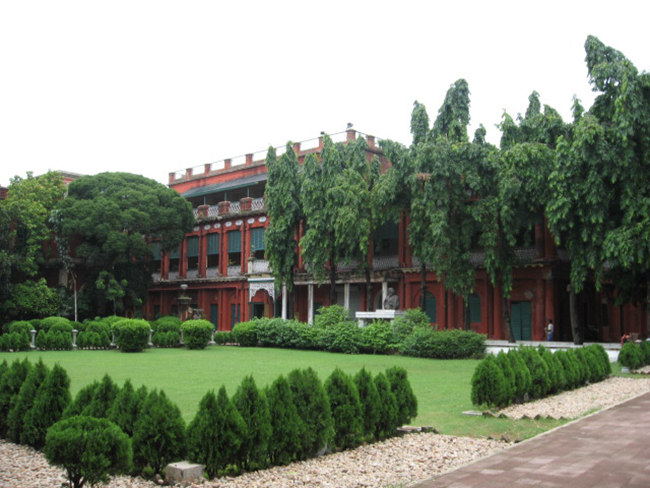 Jorasanko Thakur Bari is the ancestral home of the Tagore family. It is the house in which the poet and first non-European Nobel laureate, Rabindranath Tagore was born. He spent most of his childhood here and died on 7 August 1941. The house currently serves as the Tagore museum for Kolkata which offers details about the history of the Tagore family including its involvement with the Bengal Renaissance and the Brahmo Samaj.
Jorasanko Thakur Bari is the ancestral home of the Tagore family. It is the house in which the poet and first non-European Nobel laureate, Rabindranath Tagore was born. He spent most of his childhood here and died on 7 August 1941. The house currently serves as the Tagore museum for Kolkata which offers details about the history of the Tagore family including its involvement with the Bengal Renaissance and the Brahmo Samaj.
5. Howrah Bridge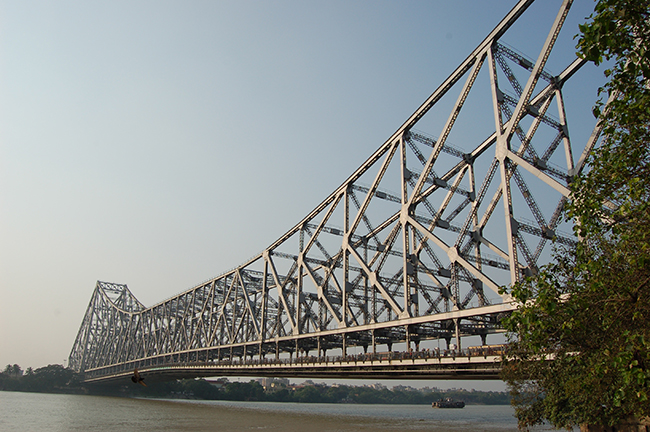 Howrah Bridge renamed Rabindra Setu after the great Bengali poet Rabindranath Tagore is still popularly known as the Howrah Bridge. It is a cantilever bridge with a suspended span over the Hooghly River in West Bengal. The third-longest cantilever bridge at the time of its construction, it is currently the sixth-longest bridge of its type in the world.
Howrah Bridge renamed Rabindra Setu after the great Bengali poet Rabindranath Tagore is still popularly known as the Howrah Bridge. It is a cantilever bridge with a suspended span over the Hooghly River in West Bengal. The third-longest cantilever bridge at the time of its construction, it is currently the sixth-longest bridge of its type in the world.
6. Dakshineshwar Kali Temple Dakshineswar Kali Temple is a Hindu temple located in Dakshineswar near Kolkata. Situated on the eastern bank of the Hooghly River, the presiding deity of the temple is Bhavatarini, an aspect of Kali. Built in the traditional 'Nava-ratna' or nine spires style of Bengal architecture, the three-storeyed south-facing temple has nine spires. Close to the main temple are a row of twelve identical Shiva temples built facing the east in the typical aat-chala Bengal architecture on either side of the ghat on the Hoogly River.
Dakshineswar Kali Temple is a Hindu temple located in Dakshineswar near Kolkata. Situated on the eastern bank of the Hooghly River, the presiding deity of the temple is Bhavatarini, an aspect of Kali. Built in the traditional 'Nava-ratna' or nine spires style of Bengal architecture, the three-storeyed south-facing temple has nine spires. Close to the main temple are a row of twelve identical Shiva temples built facing the east in the typical aat-chala Bengal architecture on either side of the ghat on the Hoogly River.
7. St. Paul’s Cathedral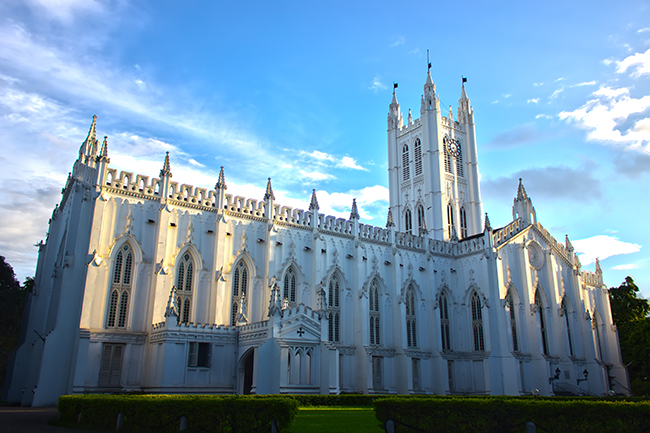 St. Paul's Cathedral is an Anglican cathedral in Kolkata noted for its Gothic architecture. It is the seat of the Diocese of Calcutta and said to be the largest cathedral in Kolkata and the first Episcopal Church in Asia. It was also the first cathedral built in the overseas territory of the British Empire. The architectural design of the cathedral is "Indo-Gothic", a Gothic architectural style designed to meet the climatic conditions of India. The cathedral complex has a library, situated over the western porch, and a display of Plastic art forms and memorabilia.
St. Paul's Cathedral is an Anglican cathedral in Kolkata noted for its Gothic architecture. It is the seat of the Diocese of Calcutta and said to be the largest cathedral in Kolkata and the first Episcopal Church in Asia. It was also the first cathedral built in the overseas territory of the British Empire. The architectural design of the cathedral is "Indo-Gothic", a Gothic architectural style designed to meet the climatic conditions of India. The cathedral complex has a library, situated over the western porch, and a display of Plastic art forms and memorabilia.
8. Marble Palace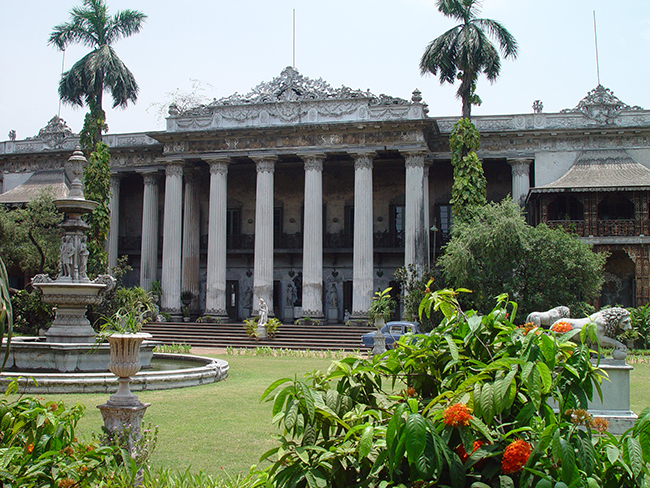 Marble Palace is a palatial nineteenth-century mansion in North Kolkata. It is one of the best-preserved and most elegant houses of nineteenth-century Calcutta famous for its marble walls and floors, from which its name derives. The house was built in 1835 by Raja Rajendra Mullick, a wealthy Bengali merchant with a passion for collecting works of art. The house continues to be a residence for his descendants. It is basically Neoclassical in style, while the plan with its open courtyards is largely traditional Bengali. The house contains large quantities of Western sculpture and Victorian furniture, paintings by European and Indian artists, and other objects d'art.
Marble Palace is a palatial nineteenth-century mansion in North Kolkata. It is one of the best-preserved and most elegant houses of nineteenth-century Calcutta famous for its marble walls and floors, from which its name derives. The house was built in 1835 by Raja Rajendra Mullick, a wealthy Bengali merchant with a passion for collecting works of art. The house continues to be a residence for his descendants. It is basically Neoclassical in style, while the plan with its open courtyards is largely traditional Bengali. The house contains large quantities of Western sculpture and Victorian furniture, paintings by European and Indian artists, and other objects d'art.
9. Birla Mandir Birla Mandir is a Hindu temple built by the industrialist Birla family. It took 26 years to complete the entire structure. The main temple houses statues of deities Krishna and Radha.The left side temple shikhar houses goddess Durga, while the right side dome houses Shiva in meditation mode. Designed by the architect Nomi Bose, the temple showcases pictorial depiction of scriptures of Bhagavad Gita in its stone engravings and some intricate Rajasthani temple architecture.
Birla Mandir is a Hindu temple built by the industrialist Birla family. It took 26 years to complete the entire structure. The main temple houses statues of deities Krishna and Radha.The left side temple shikhar houses goddess Durga, while the right side dome houses Shiva in meditation mode. Designed by the architect Nomi Bose, the temple showcases pictorial depiction of scriptures of Bhagavad Gita in its stone engravings and some intricate Rajasthani temple architecture.
10. Belur Math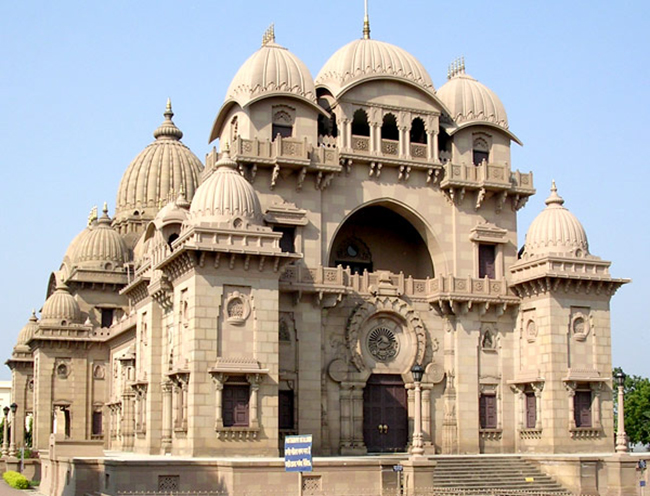 Belūr Math is the headquarters of the Ramakrishna Math and Mission, founded by Swami Vivekananda, a chief disciple of Ramakrishna Paramahamsa. Located on the west bank of Hooghly River, it is one of the significant institutions in Calcutta. The temple is notable for its architecture that fuses Hindu, Christian and Islamic motifs as a symbol of unity of all religions. Belur Math is considered as one of the prime tourist spots near Kolkata and place of pilgrimage by devotees.
Belūr Math is the headquarters of the Ramakrishna Math and Mission, founded by Swami Vivekananda, a chief disciple of Ramakrishna Paramahamsa. Located on the west bank of Hooghly River, it is one of the significant institutions in Calcutta. The temple is notable for its architecture that fuses Hindu, Christian and Islamic motifs as a symbol of unity of all religions. Belur Math is considered as one of the prime tourist spots near Kolkata and place of pilgrimage by devotees.
11. Fort William 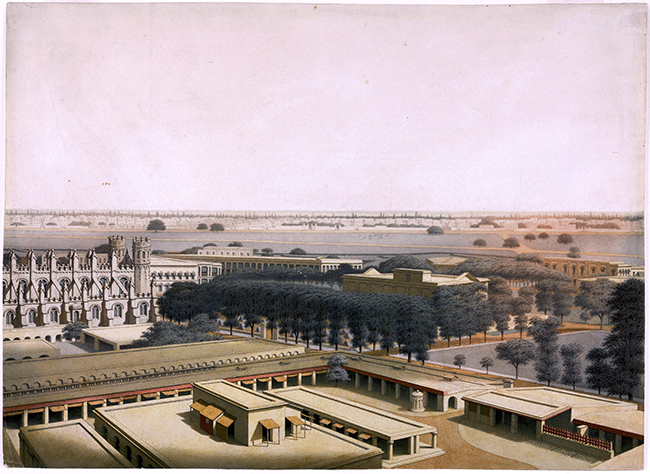 Fort William is a fort built in Calcutta on the eastern banks of the River Hooghly during the early years of the Bengal Presidency of British India. It was named after King William III of England and Ireland and II of Scotland. In front of the Fort is the Maidan, which used to be a part of the Fort and is the largest urban park in Calcutta. The Fort is built of brick and mortar in the shape of an irregular octagon with an area 5 km². Five of its sides face landward whilst three towards the Hooghly River. The design is that of a star fort, suited to defence against cannon, but from before the advent of explosive shells.
Fort William is a fort built in Calcutta on the eastern banks of the River Hooghly during the early years of the Bengal Presidency of British India. It was named after King William III of England and Ireland and II of Scotland. In front of the Fort is the Maidan, which used to be a part of the Fort and is the largest urban park in Calcutta. The Fort is built of brick and mortar in the shape of an irregular octagon with an area 5 km². Five of its sides face landward whilst three towards the Hooghly River. The design is that of a star fort, suited to defence against cannon, but from before the advent of explosive shells.
12. National Library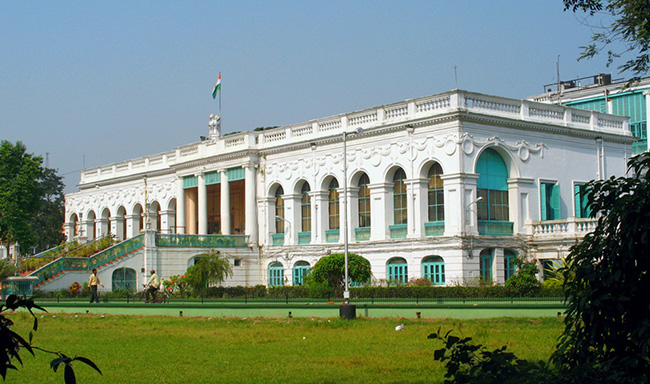 The National Library of India on the Belvedere Estate in Alipore, Kolkata, is the largest library in India by volume and India's library of public record. It is under the Department of Culture, Ministry of Tourism & Culture, Government of India and is designated to collect, disseminate and preserve printed material produced in India. Before independence, it was the official residence of Lt. Governor of Bengal.
The National Library of India on the Belvedere Estate in Alipore, Kolkata, is the largest library in India by volume and India's library of public record. It is under the Department of Culture, Ministry of Tourism & Culture, Government of India and is designated to collect, disseminate and preserve printed material produced in India. Before independence, it was the official residence of Lt. Governor of Bengal.
13. Shaheed Minar The Shaheed Minar, formerly known as the Ochterlony Monument was erected in 1828 in memory of Major-general Sir David Ochterlony, commander of the British East India Company, to commemorate both his successful defense of Delhi against the Marathas in 1804 and the victory of the East India Company’s armed forces over the Gurkhas in the Anglo-Nepalese War. In August 1969, it was rededicated to the memory of the martyrs of the Indian freedom movement and hence renamed 'Shahid Minar'. It has a foundation based on the Egyptian style.[4] The column is a combination of styles with a classical fluted column, a Syrian upper portion and a Turkish dome.
The Shaheed Minar, formerly known as the Ochterlony Monument was erected in 1828 in memory of Major-general Sir David Ochterlony, commander of the British East India Company, to commemorate both his successful defense of Delhi against the Marathas in 1804 and the victory of the East India Company’s armed forces over the Gurkhas in the Anglo-Nepalese War. In August 1969, it was rededicated to the memory of the martyrs of the Indian freedom movement and hence renamed 'Shahid Minar'. It has a foundation based on the Egyptian style.[4] The column is a combination of styles with a classical fluted column, a Syrian upper portion and a Turkish dome.
14. South Park Street Cemetery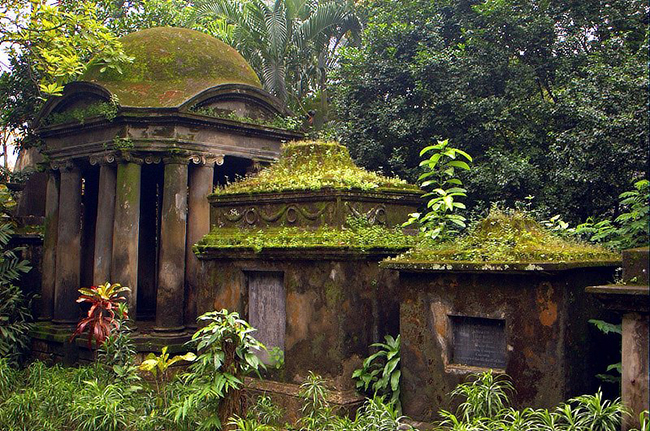 South Park Street Cemetery is one of the earliest non-church cemeteries in the world, and probably the largest Christian cemetery in India. Opened in 1767 on what was previously a marshy area, the cemetery was in use until about 1830 and is now a heritage site, protected by the Archaeological Survey of India. The tombs are a mix of Gothic and the rich flavour of the Indo-Saracenic style. Among the Indo-Saracenic tombs is a unique and composite brick structure built in the ‘panchyatana’ manner, with a central dome flanked by miniature replicas of Orissan ‘rekha deul’ on four sides. Coupled with this peculiarity, the black basalt carvings on the frontal façade indicate a distinct respect for the Hindu faith.
South Park Street Cemetery is one of the earliest non-church cemeteries in the world, and probably the largest Christian cemetery in India. Opened in 1767 on what was previously a marshy area, the cemetery was in use until about 1830 and is now a heritage site, protected by the Archaeological Survey of India. The tombs are a mix of Gothic and the rich flavour of the Indo-Saracenic style. Among the Indo-Saracenic tombs is a unique and composite brick structure built in the ‘panchyatana’ manner, with a central dome flanked by miniature replicas of Orissan ‘rekha deul’ on four sides. Coupled with this peculiarity, the black basalt carvings on the frontal façade indicate a distinct respect for the Hindu faith.
15. Science City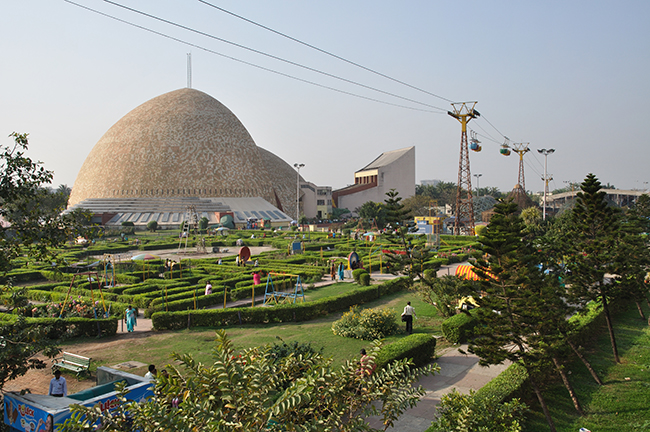 Science City, Kolkata is the largest science centre in the Indian subcontinent under National Council of Science Museums, Ministry of Culture, Government of India. It is considered as the most distinguished landmark in post-independence Kolkata. It has various galleries including a Dynamotion Hall, Earth Exploration Hall, Space Odyssey, Maritime Centre as well as a Science Park and a Science Exploration Hall.
Science City, Kolkata is the largest science centre in the Indian subcontinent under National Council of Science Museums, Ministry of Culture, Government of India. It is considered as the most distinguished landmark in post-independence Kolkata. It has various galleries including a Dynamotion Hall, Earth Exploration Hall, Space Odyssey, Maritime Centre as well as a Science Park and a Science Exploration Hall.
The 'City of Joy' is the most suitable place for eager visitors with its numerous tourist attractions. Often compared to the cities in western countries for its development under the British, this eventful city with its many marvels has a lot to offer. Have a great time exploring Kolkata.

